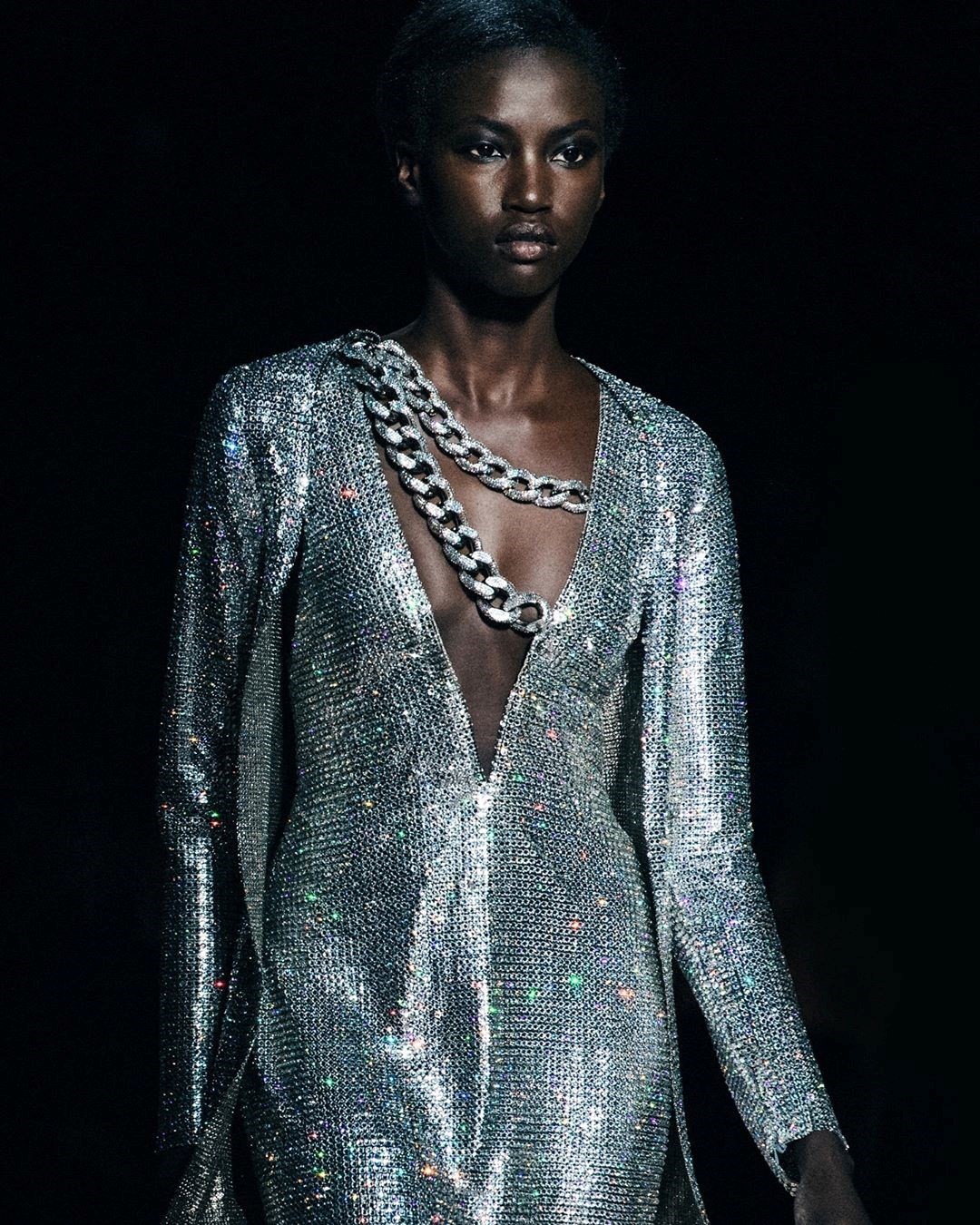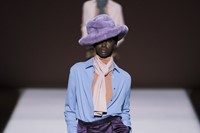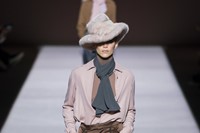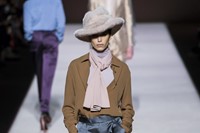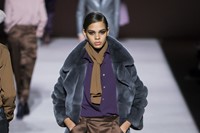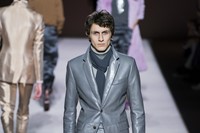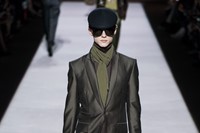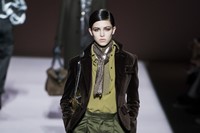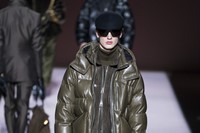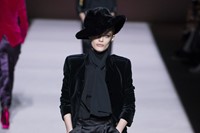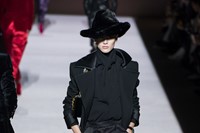Tom Ford is the only fashion designer in the world with an Academy Award-nominated film under his belt – as director, that is, rather than costumier. Make that director, producer and writer of both 2009’s A Single Man and 2016’s Nocturnal Animals. Those each garnered Oscar nods, among an array of other accolades. And Ford’s exacting eye (and ear, and nose – although that’s only reflected in his beauty business) truly justifies use of the term “auteur”.
But maybe that shouldn’t come as a surprise when viewing Ford’s fashion back catalogue – under Gucci, Yves Saint Laurent and, since 2005, his own name. Each has boasted cinematic moments, and a fully realised universe where Ford oversaw everything from logo rejigging to store redesign to – obviously – every facet of the clothes and their presentation.
Backstage after his latest Autumn/Winter 2019 men’s and women’s show in New York yesterday evening, it was inevitable that talk would turn to film. Ford’s production company Fade to Black currently has a couple in the pipeline – one was supposed to shoot this summer, Ford said, but was delayed; he’s also bought the screenplay rights to a book. “Film can impact people in a different way than fashion,” Ford said, in the smooth dulcet tones of a matinée idol, of his second career. “It has a permanence that fashion doesn’t have… it is the ultimate. Because you design a world, forever. Every time you watch a film, it ends the same way. It’s very complete.”
That said, throughout his three decades in the industry, the now-57-year-old Ford has tended to view fashion with the eye of a director, rather than a stylist. He’s also unquestionably created an entire world of his own – it’s tricky to think of something he hasn’t turned his hand to designing (including, when at Gucci, the esoteric delights of scuba-diving gear, G-logo ice-cube trays, spanking paddles, fetishistic riding crops and handcuffs). And plenty of people have wanted to live in the worlds he’s crafted – powering not one but two empires to multi-billion pound turnovers.
“I’ve always thought of shows in a cinematic way,” says Ford, of his fashions. “Which you used to be able – but for a phone – to pull off. I would always show under a spotlight – no-one had phones, so they were really looking. The entire room was seeing the exact same thing, at the exact moment. So you could literally get people to emote. You had that concentration, that you can’t get anymore.”
“I would always create in a cinematic way,” he continues. “You lead them through it, and then hopefully try to end with something that makes them feel very emotional. And now, everyone’s distracted.” Tom Ford shrugs. “But it’s the world.”
Here then, are a few Ford moments past that chime with his cinematic vision of the fashion world, and evoke emotion then, and now – excitement, passion, even a little melancholy. Get ready to get choked up.
Gucci Autumn/Winter 1996
Ford’s early Gucci shows were the ones he talked about staging under a spotlight – a Klieg-style circular frame that trailed his models up and down, in everything from slinky satin shirts and hip-huggers to G-logo thongs (on him and her). The liquid jersey dresses of Autumn/Winter 1996, however, got special mention from Ford for this season – their lines inspired his relaxed evening dresses with matching floor-length cardigans for this season.
Gucci Autumn/Winter 2003 Menswear
The New York Times cast the man of this Gucci show as “a vaguely late-70s Dirk Diggler sort” – a way of framing Ford’s thigh-hugging flares and patently artificial moustaches through the lexicon of Boogie Nights-era porno flicks. The seventies have been a favoured stomping ground for Ford, but frequently it’s their fantasy as reflected and refracted through the glamorous lens of cinema that the designer uses to inspire, for men as much as for women.
Gucci Autumn/Winter 2003 Womenswear
When you talk about a fashion show choking its audience up, few come close to the final flurry of this Gucci collection – when rose petals tumbled from the ceiling to the tear-jerker tune of Sinead O’Connor’s Nothing Compares 2 U. They fell over a selection of silver screen siren satin-bias gowns in scarlet and black straight out of the golden age of Hollywood – fittingly chimed with the theme of that year’s Metropolitan Museum of Art Costume Institute Gala, Goddess: The Classical Mode, whose exhibits included clothes by Ford (obviously) and by Metro-Goldwyn-Mayer’s costume designer Gilbert Adrian.
Tom Ford Spring/Summer 2011 Womenswear
Could anything be more Hollywood than, say, Lauren Hutton walking in your fashion show? How about Lauren Hutton, and Marisa Berenson, and Julianne Moore, and Beyoncé Knowles? For his first own-label womenswear presentation, Ford’s cabine was a roll-call of stars from music, modelling and most of all the screen. Heady and hedonistic, it resembled nothing if not a 21st-century high-fashion remake of George Cukor’s 1939 classic The Women – which famously contained its very own fashion show by the aforementioned Adrian.
Tom Ford Autumn/Winter 2019
And so, Ford’s latest show. Was there anything cinematic here? How about the slouchy Marlene Dietrich-esque satin trousers that emerged on almost every female model, alongside men clad in the dapper, dashing dress of Clark Gable or Gene Kelly? The low-tugged faux-fur fedoras, casting shadows over the face, were pure film noir (arguably, also a bit Boogie Nights too), while the finale dresses in fluid jerseys and crystal mesh could as easily have graced Joan Crawford or Jean Harlow 80 years hence. How’s that for sustainable fashion?
